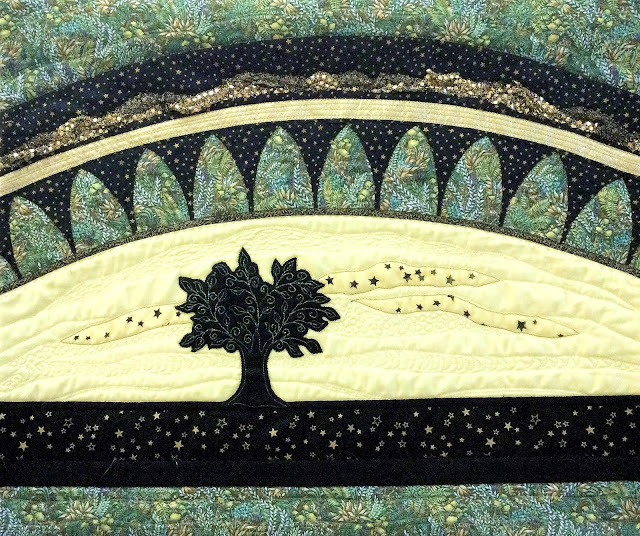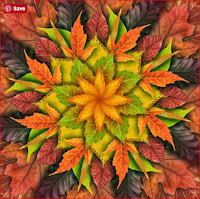I can't help but feel that this quilt is a complete cheat.
One of the many fun parts of belonging to a quilt guild is doing the challenges. Recently, we did an “ugly fabric challenge”. Participants brought in a piece from their stash, something that they considered to be ugly. A draw ensued and each person received their “ugly” fabric, with no restrictions as to how it was to be used, except that it had to be recognizable in the final piece. In other words, no over-dyeing or cutting it up into confetti-sized pieces, or using it on the back. It had to be legit.
Some doozey fabric swatches came in, and since the person who donated each piece was not identified, even the purple fabric that looked so attractive in the 1980’s was game. That one, despite the randomness of the draw, went to the purple-hating quilter. Of course.
The piece I donated was viewed by several quilters as “quite nice” and “not ugly at all”. There was even a comment of “Gee, I really like that one”. I viewed it with fresh eyes and decided that, yes, it was not nearly as unattractive as I had thought. I started to feel a teensy bit sad that I was letting it go. Hadn' I once loved that fabric? Later on while combing through a drawer of fabric at home, I found that I had given away the wrong piece, and the one that was truly ugly was still grinning at me from the drawer.
I was hoping to receive something I could really get my teeth into. But when my name was drawn I got a lovely piece of fabric. How could anyone ever view it as “ugly”? However, while it was not exactly ugly, it did not easily lend itself to the creation of an art quilt. Doing a landscape scene and using it for a shrub or two seemed inadequate. I couldn't come up with an idea of what type of block quilt I might use it in. So, it was ultimately very challenging, and I could not come up with a single idea. As the pandemic descended upon us, and guild meetings ceased, my thoughts turned elsewhere and the ugly fabric challenge was completely forgotten.
Months later the guild reconnected via Zoom. There was no ducking it, the ugly fabric challenge was still on the agenda. With a deadline! I had to dig down through the piles of UFO’s (Unfinished Objects) and USO’s (Unstarted Objects) that weighed down my quilt table and spilled over onto the floor. The pandemic and all of its uncertainties had not been conducive to creative quilting. But it sure had been conducive to creating a giant mess as I tried to come up with something I could work on (other than masks!) that would pull me out of a grinding feeling of despair. Eventually, a pregnancy (not mine!) came along to save me, and a baby quilt was needed. As I completed this simple project, I noticed the yellow fabric had befriended the so-called “ugly” fabric in the pile. It made me think of a rising moon with its pale yet inviting yellow tone.
 |
| The baby quilt that "saved" me. |
It’s never a good idea to argue with fabric. And while I felt like I was cheating by having a non-ugly “ugly fabric”, the piece was defiant enough to give me a good challenge. Mission accomplished!





